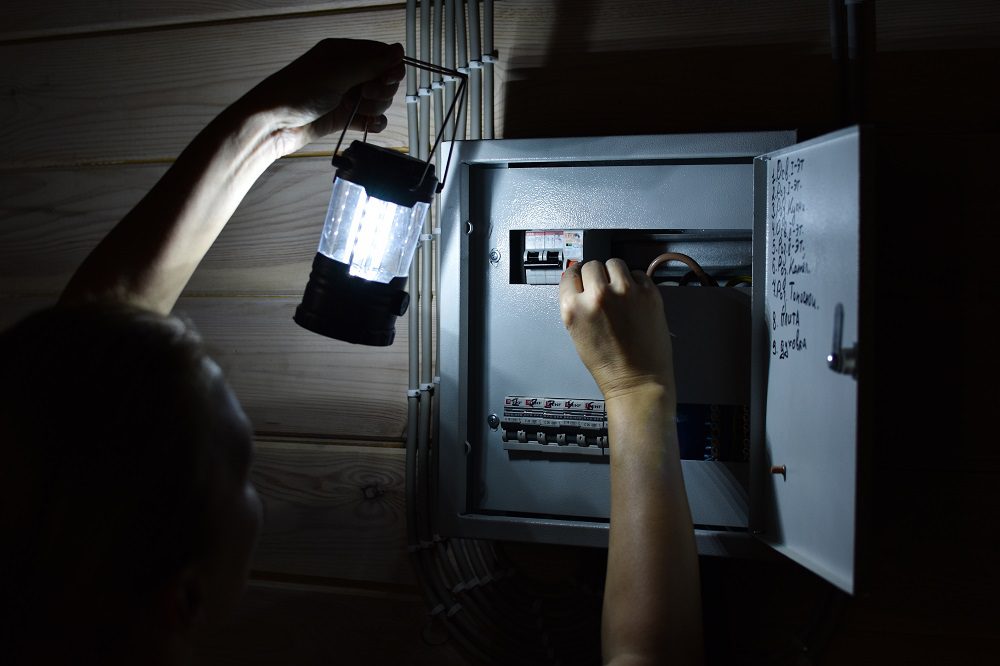
Simple Checks That Prevent Major Wiring Issues in Charlotte
Charlotte homes have a few common electrical patterns. Many houses in Dilworth and Plaza Midwood still carry older wiring mixed with newer circuits. Newer builds in Ballantyne and Steele Creek use arc-fault and GFCI protection but can still suffer from loose terminations and overloaded circuits. Small, regular checks can catch these issues early. The result is fewer surprises, fewer tripped breakers, and safer living spaces. For homeowners searching for electrical wiring Charlotte NC, simple habits matter as much as upgrades.
Why small checks pay off in Charlotte
Warm, humid summers work against connections and devices. Expansion and contraction loosen screws, and moisture speeds corrosion on outdoor outlets and panel lugs. Add holiday loads in SouthPark, EV chargers in NoDa, or space heaters in University City, and minor weaknesses show up fast. A quick scan each season reduces the chance of arcing, nuisance trips, and overheating that can damage insulation or start a fire.
The 10-minute outlet and switch scan
A walkthrough reveals more than most people expect. Start with the rooms that see the most use. Plug in a small lamp and move room by room. If the lamp flickers while wiggling the plug, the receptacle may have weak retention clips or a loose backstab connection. A warm or discolored faceplate hints at an overloaded or loose connection. Crackling or a faint buzz at a switch points to worn contacts, common in high-use switches near kitchens and garage entries.
In neighborhoods with mixed-age wiring, outlet quality varies. Older receptacles often use backstab push-in connections, which tend to loosen over time. Upgrading to a modern receptacle with screw terminals and a proper pigtail usually solves intermittent power issues.
GFCI and AFCI devices: quick push-button tests
In Charlotte, code requires GFCI protection in kitchens, bathrooms, garages, basements, laundry areas, and outdoor locations. Many bedrooms and general living areas in newer homes have AFCI breakers or AFCI receptacles. Press the test button on each GFCI monthly. It should click off and cut power. Press reset and confirm power returns. If it trips immediately after you press reset, water, a bootleg ground, or a wiring fault may be present.

AFCI breakers in the panel have a test button as well. Press and hold for a second. A working device will trip the handle to the middle or off position. If it refuses to reset, it might be reacting to a damaged cord or a loose neutral downstream. In our field calls across Myers Park and Elizabeth, about half of nuisance AFCI trips trace back to loose wirenuts in a light box or a failing plug-in power strip, not the breaker itself.
The breaker panel: look, smell, and listen
A safe inspection is visual and does not require removing the dead front. Stand at the panel with the door open. Scan for rust, white powdery residue, or scorch marks. Smell for a sharp, burnt odor. Lightly touch the breaker faces. They should be near room temperature. A noticeably hot breaker, especially on a lightly loaded circuit, can point to a weak internal mechanism or a loose connection at the lug.
In many Charlotte garages, panels sit near water heaters or laundry hookups. Drips and condensation corrode bus bars over time. Corrosion raises resistance and heat. If there is any sign of moisture, a quick service call is cheaper than a bus replacement later. Also check labeling. Vague notes like “lights” or “misc” slow down emergencies. Precise labels save minutes when a storm knocks something out in South End.
Grounding and bonding around older service equipment
Homes built before the mid-90s may have grounding that no longer meets current best practices. Look for a copper wire from the main panel to a ground rod outside and to metal water piping. In older homes around Chantilly, the water bond is missing more often than expected, especially after a plumbing repipe with PEX. A missing bond can cause tingle shocks at faucets and slow breaker trips during faults. This is a fast check for a licensed electrician and prevents longer diagnosis later.
Outdoor outlets and fixtures in humid seasons
Rain and summer storms in Charlotte are hard on exterior outlets. Open the in-use cover and check the gasket. A cracked or shrunken gasket lets water wick into the box. Rusted screws, green corrosion on copper, or insects inside the cover all point to moisture intrusion. LED floods on soffits often flicker due to waterlogged wire nuts. A weather-rated box, proper in-use cover, and silicone around the top edge keep this from returning.
Common warning signs that should trigger a call
- Repeated breaker trips on the same circuit within a week
- Lights that pulse or dip when the AC or microwave starts
- A faint burning smell near a panel, outlet, or switch
- Outlets that no longer grip plugs firmly
- Tingling from metal appliances or fixtures
If any of these show up, stop and schedule a licensed electrician. Persistent symptoms suggest heat, arcing, or a compromised neutral. These issues escalate quickly, and a fast correction is safer and cheaper than a repair after damage.

Simple load checks that prevent overload
Most 15-amp general lighting circuits support about 1,400 watts of continuous load. A kitchen small-appliance circuit at 20 amps supports about 1,800 watts. During the holidays in Matthews or Pineville, coffee makers, air fryers, and toasters often share one circuit. If lights dim when someone toasts bread, move one appliance to a different counter circuit. Space heaters draw 1,000 to 1,500 watts and cause many winter trips. A dedicated circuit for an office or a heater-heavy bonus room pays off in comfort and reliability.

EV charging in areas like Berewick and Highland Creek adds new load. A Level 2 charger typically needs a 40- to 60-amp circuit. Before adding one, a quick load calculation compares your service size, large appliances, and HVAC tonnage. Skipping this step risks nuisance trips and overheated panels.
Aluminum branch circuits and mixed metal terminations
Some homes in Charlotte from late 60s to mid-70s have aluminum branch wiring on 15- and 20-amp circuits. Aluminum expands and contracts more than copper and oxidizes, which loosens terminations. Warning signs include warm switches, flicker, and occasional odor. Safe fixes include COPALUM crimp or AlumiConn connectors with copper pigtails. Simple wirenut swaps are not reliable for aluminum. If a home inspection flagged aluminum, plan a focused correction rather than waiting for intermittent issues to worsen.
Light fixtures that eat bulbs: heat and vibration
Rapid bulb failure often points to heat buildup or vibration. Flush-mount fixtures with older sockets run hot on incandescent bulbs. Switch to LED lamps rated for enclosed fixtures. In stairwells where bulbs shake loose, a poor neutral in the switch loop is a common cause of strobe-like flicker. If new LEDs still flash, the problem is upstream, not the lamp.
Seasonal habits that keep wiring stable
- Test GFCI and AFCI devices every month and record failures
- After severe storms, recheck outdoor outlets and any low outlets near basements or crawl spaces
- Tighten device screws when replacing cover plates; loose devices move and stress conductors
- Replace backstabbed receptacles with screw-terminal versions during any cosmetic upgrades
- Keep space heaters on dedicated outlets, never on power strips
These small habits match Charlotte’s climate and housing stock. They address the problems electricians see week after week across SouthPark, Lake Wylie, and Uptown condos.
When a quick fix is not enough
There is a line between homeowner checks and professional service. Warm breakers, repeated trips, buzzing, and aluminum wiring deserve licensed work. So do panel upgrades, EV circuits, hot tub feeds, and kitchen remodels that need AFCI and GFCI coordination. Permit-backed work protects insurance coverage and supports real safety. In older homes with cloth-insulated or knob-and-tube remnants, a staged rewiring plan often works best, starting with kitchens, bathrooms, and HVAC circuits, then moving to lighting.
What Ewing Electric Co. does during a wiring health visit
A wiring health visit is a focused, one- to two-hour appointment. The electrician tests GFCI and AFCI protection, measures voltage drop at far outlets, uses a thermal camera on breakers and major connections, and opens a few sample devices to check terminations. Outdoor receptacles and any damp locations get extra attention. The visit ends with a short list: what to fix now, what to monitor, and what upgrades give the best value. Homeowners get straight answers and clear pricing, not upsells.
Local context matters: Charlotte codes and utility quirks
Duke Energy service drops, meter bases, and mast heights come up often after storms. A pulled service mast is a homeowner-side repair. Many surprised owners learn this during the outage. Ewing Electric Co. coordinates with inspectors and Duke to restore service quickly and handles emergency service rebuilds that match current code, including grounding upgrades and surge protection. This keeps insurance claims smooth and reduces repeat failures.
Ready for a quick safety check?
If a home shows any of the warning signs above, or if it has never had a panel and protection review, it is time to schedule. Residents searching for electrical wiring Charlotte NC can book a wiring health visit with Ewing Electric Co. The team serves Ballantyne, South End, Myers Park, University City, Steele Creek, Plaza Midwood, Dilworth, and nearby towns. Call today to prevent small problems electrical wiring near me from turning into major wiring repairs.
Ewing Electric Co provides dependable residential and commercial electrical services in Charlotte, NC. Family-owned for over 35 years, we handle electrical panel upgrades, EV charger installation, generator installation, whole-home rewiring, and 24/7 emergency repairs. Our licensed electricians deliver code-compliant, energy-efficient solutions with honest pricing and careful workmanship. From quick home fixes to full commercial installations, we’re known for reliable service done right the first time. Proudly serving Charlotte, Matthews, Mint Hill, and nearby communities. Ewing Electric Co
7316 Wallace Rd STE D Phone: (704) 804-3320 Website:
https://ewingelectricco.com/ |
Electric Company in Charlotte
Social:
Facebook |
Instagram |
Twitter |
LinkedIn |
Yelp |
Angi |
BBB
Map: View on Google Maps
Charlotte,
NC
28212,
USA